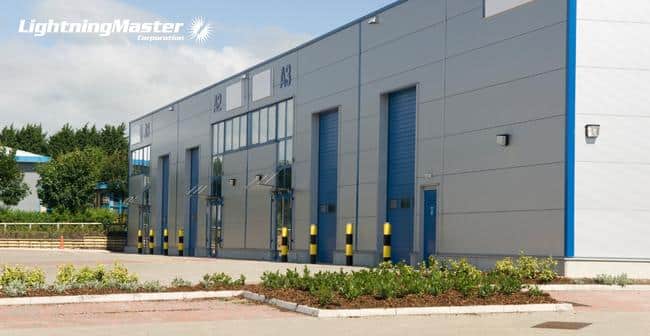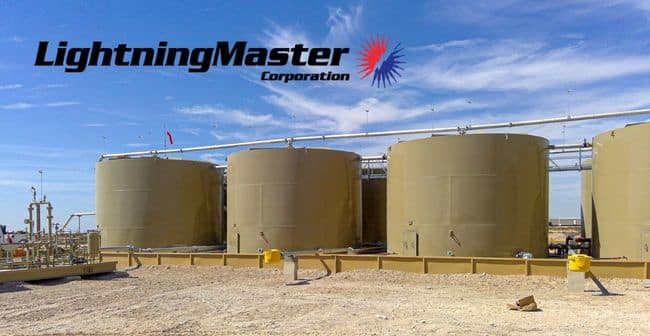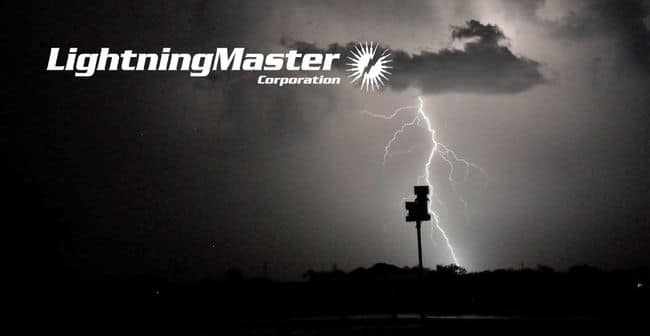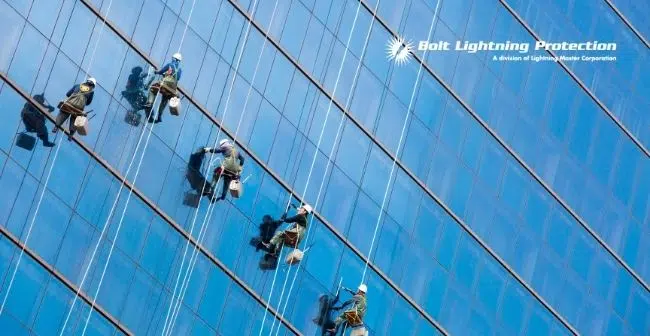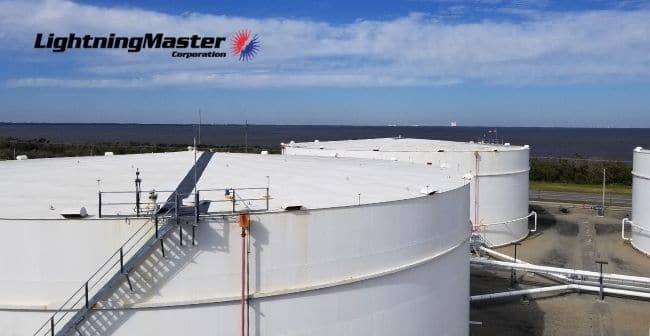Effects of Nearby Lightning Strikes on Commercial Properties
Everyone understands that lightning strikes are extremely powerful, sometimes even resulting in costly downtime for businesses. The damage that results from lightning strikes can not only be a danger to personnel, but can also cause damage to commercial structures. What many people don’t realize is that businesses are much more likely to experience the effect of lightning that is nearby instead of a direct strike to a structure. We will review the types of lightning damage caused by nearby strikes as well as how to mitigate damage to commercial properties. as a result.
Types of lightning damage by nearby strikes
Secondary effect damage – happens when lightning hits a certain point on the earth, it relatively vacates the ground charge at that point. The surrounding area is still highly charged and that charge rushes to the point of the strike. If that inrush of charge crosses a gap, it can arc. If the arc takes place in circuit board it can damage the circuit board.
EMP damage – because the lighting channel is turning on and off, the electromagnetic pulse is expanding and collapsing. Basic electric theory, if you have electromagnetic motion across a conductor, you can induce current on that conductor. This is also a problem with ungrounded pieces of metal, if you have a piece of ungrounded metal and it is next to something that is grounded the EMP coming off lightning channel can induce enough current in the ungrounded piece of metal to arc to the grounded piece of metal.
Changes in ground reference potential – is caused by a difference in potential between two different structures separated by distance. If lightning strikes closer to one than the other there will be a big difference in potential. Most of the energy will flow through the ground, some of the energy will flow through the data lines and out to AC power ground providing unwanted current flow in your data lines.
Commercial properties contain critical electrical equipment. Facilities are practically run by computers, which makes buildings vulnerable to power surges if not properly protected. Damage to electronics may cause costly damage and downtime.
How Bolt Lightning Protection Protects Against Indirect Lightning Strikes
Now that you have a better understanding of indirect lightning strike effects, you can probably see why it’s so important to protect your facility with the proper lightning protection system.
Here’s a quick look at how Bolt Lightning Protection protects commercial properties:
Bonding & Grounding
The first line of defense against indirect lightning strike effects is bonding and grounding. Bonding everything together with wires keeps everything at the same potential. The primary reason for this is personnel safety and the secondary reason is equipment protection. There are two types of grounding : structure grounding & services/equipment grounding. A structure is anything likely to be hit by lightning. When lightning hits a structure you want to get the energy off of the structure and into the earth as quickly as possible. When grounding a structure, multiple low-impedance paths will be used to redirect lightning energy from the structure into the ground. For services and equipment, single-point ground potential referencing is used, where all of the building’s equipment is connected to the grounding system at a single point. It is also to bond and ground all services together at one point.
Surge Protection and Suppression
Anytime you have a wire coming into a building from the outside world, that wire is perfectly capable delivering all types of mischief into the facility, this is why surge protection should be used. A surge suppressor is a device that becomes conductive at some voltage. As the potential rises and the surge suppression becomes conductive, it shunts the surge back to where it came. This is required by NFPA 780 and UL both on all services where they enter the structure (AC power, telephone, RF, data, etc)
Structural Lightning Protection
Structural lightning protection is often referred to as a “lightning rod system.” The system consists of three components:
- Strike termination devices (lightning rods)
- Conductor system (to get the current to ground)
- Grounding system
The strike termination devices are intended to intercept the strike and establish zones of protection. The space adjacent to the lightning protection system is essentially immune from direct lightning strikes is considered in the “zone of protection” of the lightning protection system. You want to get all of the equipment you don’t want hit by lightning in the zone of protection of the lightning protection system so lightning will hit the system and not your building.
To Learn More About Indirect Lightning Strike Effects, Contact Bolt Lightning Protection
Nearby lightning strike effects can be very costly and inconvenient to commercial properties. Bolt Lightning Protection utilizes up to date industry standards: NFPA 780 and UL96/96A to design a lightning protection system to keep your commercial property from being damaged by the effects lightning strikes.
If you have any questions regarding the above information or would like us to survey your property, reach out to us at (800) 749-6800 today.
